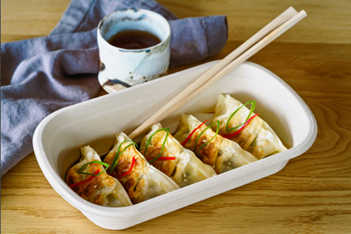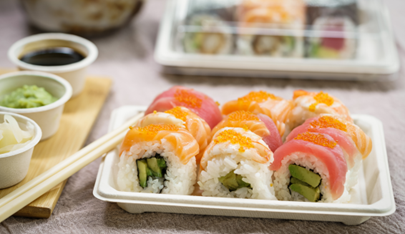As the push for sustainability grows, more businesses and consumers are exploring eco-friendly alternatives to traditional packaging. Sugarcane takeaway packaging has emerged as a popular option, made from the fibrous residue left after sugarcane is processed for juice extraction. This compostable material offers a compelling alternative to conventional plastic and foam containers. However, like any solution, it comes with both advantages and challenges. Let’s explore the pros and cons of switching to sugarcane takeaway packaging.

Pros of Sugarcane Takeaway Packaging
1. Eco-Friendly and Biodegradable
Sugarcane packaging is 100% biodegradable and compostable, typically breaking down within 60 to 90 days in a commercial composting facility. While also being home compostable. In contrast to plastic containers, which can persist in the environment for hundreds of years, sugarcane packaging significantly reduces waste and environmental impact.
2. Renewable Resource
Unlike plastic, which is derived from non-renewable fossil fuels, sugarcane is a renewable resource. The production of sugarcane packaging uses the by-products of sugar production, making it a sustainable choice that repurposes what would otherwise be waste.
3. Durability and Versatility
Sugarcane containers are strong and versatile, capable of holding a variety of foods, including hot, cold, wet, or oily items. They are also microwave and freezer safe, making them convenient for both food vendors and consumers.
4. Positive Brand Image
As consumers increasingly prioritize sustainability, businesses that switch to sugarcane packaging can enhance their brand image. This eco-friendly choice can attract environmentally conscious customers, potentially increasing customer loyalty and sales
5. Regulatory Compliance
With the growing number of regulations restricting single-use plastics, adopting sugarcane packaging can help businesses stay compliant with current and future environmental laws. This proactive move can prevent legal issues and showcase a company’s commitment to sustainability.

Cons of Sugarcane Takeaway Packaging
1. Increased Costs
One of the primary challenges of switching to sugarcane packaging is its higher cost compared to traditional plastic or foam containers. This cost difference can be a significant factor for businesses, especially small or budget-conscious operations, as it can impact their bottom line.
2. Moisture Sensitivity
While sugarcane packaging is durable, it can be more sensitive to moisture compared to plastic or foam. If left in a damp environment for an extended period, the packaging may begin to degrade or weaken, potentially affecting its performance during food transport or storage.
3. Limited Insulation Properties
Sugarcane containers generally offer less insulation than foam packaging. This can be a drawback for businesses that need to keep food hot or cold for extended periods, as sugarcane packaging may not retain the desired temperature as effectively.
4. Potential Allergens
Although rare, some individuals might have allergic reactions to sugarcane or its by-products. Businesses must be aware of this possibility and consider how it might affect their customer base, particularly in markets where food allergies are a significant concern.
5. Perceived Quality
Despite being sturdy, sugarcane packaging can sometimes be perceived as less high-quality than traditional plastic or foam containers. This perception can influence customer satisfaction, especially if the packaging does not meet their expectations for appearance or durability.
Conclusion
Switching to sugarcane takeaway packaging presents a compelling opportunity for businesses to embrace sustainability and cater to the growing demand for eco-friendly products. However, the decision to make this switch should be carefully considered, taking into account the potential challenges such as increased costs, moisture sensitivity, and insulation limitations.
As sustainability continues to gain importance in the food industry, sugarcane packaging may become a more viable and widespread option. For now, businesses must balance their environmental goals with practical considerations to make the best choice for their operations and their customers.
